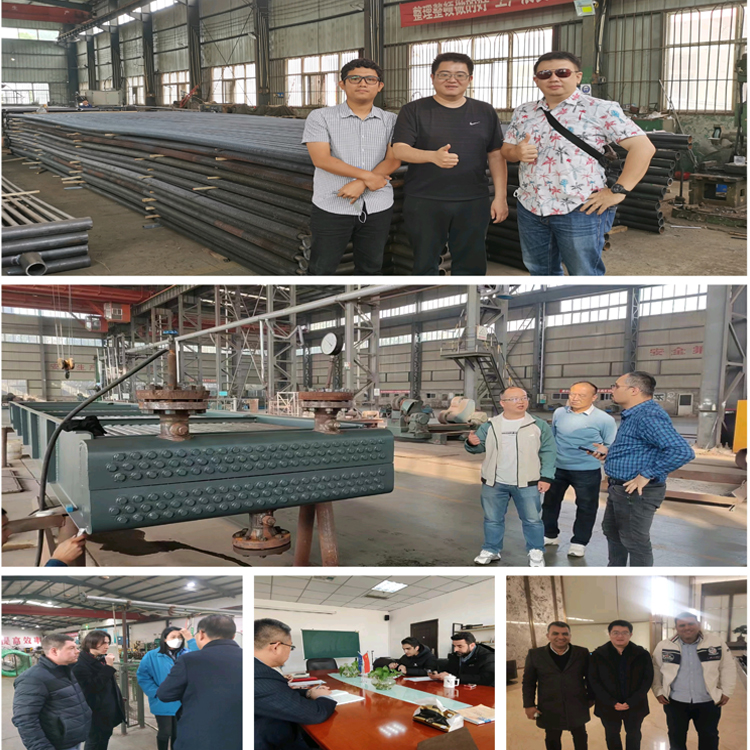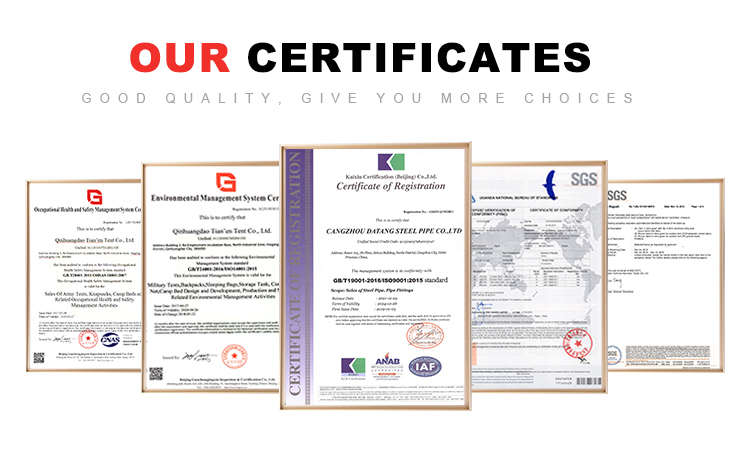H-type finned tube for economizer
H-type finned tube is a heat exchanger element used for heat exchange. It consists of a tube and many closely arranged fins. These fins can be fixed on the tube or seamlessly connected to the tube. The shape of the fins is usually “H”, hence the name H-type finned tube.
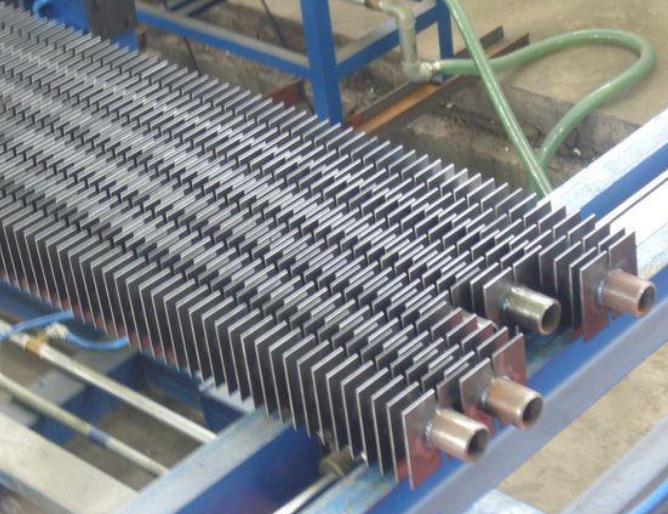
H Finned Tube For Heat Exchangers
H Finned Tube is divided into single H Finned Tube and Twin H Finned Tube (HH or Doule H finned tube), also known as Rectangular Finned Tubes. H Finned Tube is made by welding square or rectangular H fins to a steel base tube.
Twin H Finned Tube (HH or Doule H Finned Tube)
The fins are divided into two symmetrical halves, the tube wall is pressed from both sides, and the tube wall is welded by resistance welding, leaving a certain gap in the middle; two round tubes can share a set of fins, called Twin H Finned Tube
Single H Finned Tube
The fin is divided into two symmetrical halves, which press the tube wall from both sides, and are welded to the tube wall by resistance welding, leaving a certain gap in the middle; there is only one round tube in the middle, which is called Single H Finned Tube.
The heat exchanger composed of H-shaped finned tubes is closely arranged, and the tube bundles are arranged in a row.
H Type Finned Tube Quick Details:
Core tube material:
1. Carbon Steel: A106 / A179 /A192 / A210 etc…
2. Stainless Steel: TP304/304L,TP316/TP316L, TP347 etc…
3. Alloy Steel: P5,T5,P9,T9,T11,T22
Fin Material:
1. Aluminum (Alu.1100, Alu.1060)
2. Copper.
3. Steel
Tube OD: 73 mm max.
Tube Length: 18 meters max.
Fin Thickness: 1.5mm ~3.5mm
Fin Pitch: 10mm Min.
Surface Protection: Both bare ends shall be zinc or aluminum metallized by electrospray arc system coating.
Accessories: Tube support boxes, clamps or spacer boxes (materials: aluminium, zinc and stainless steel).
Common Specifications of H Finned Tube
| General Descriptions of H-fins | Popular Specifications we make |
| Tube OD(mm) | 25mm to 73mm |
| Tube Wall thickness(mm) | 2.5mm Min. |
| Tube length(mm) | 18000mm Max. |
| Fin thickness(mm) | 1.5mm to 3.5mm |
| Fin pitch(mm) | 10mm Min. |
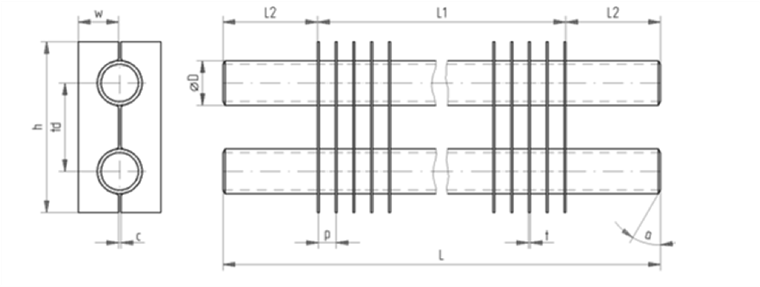
Manufacturing Process:
H Finned Tube is made by welding square or rectangular H fins to a steel base tube.
Quality Control for H Finned Tube
The quality of Square or Rectangualr H finned tubes is assured by hydrostatic or aerodynamic testing, eddy current testing and tensile testing to verify the mechanical bond between the inner tube and outer fins
Surface coating
External red oxidized zinc phosphate primer and internal Volatile Corrosion Inhibitor (VCI) in water-soluble tablet form.
Delivery conditions
Tube ends are square cut, free of burrs, dry and blown clean inside, varnished on both ends of square or rectangular finned tubes.
Features of H Finned Tube
maximum. Operating temperature: 300°C
Atmospheric corrosion resistance: OK
Mechanical resistance: good
The influence of the structure of H Finned Tube on ash accumulation and wear: the gap between the two sheets can use the flow of flue gas and scour the ash accumulation, because the flue gas has a higher flow rate at the gap; the tubes are arranged in a row, and the resistance Small wear and tear; H-shaped fins can effectively utilize the flow space and maintain a large fin area and finning ratio; The thickness of the fins can be arbitrarily selected according to the needs of anti-wear; The fins are parallel and independent of each other, without helix angle effect, thus facilitating ash removal.
Application
H Finned Tube is usually used in Economizers, Heat exchangers, Marine boilers.
Performance characteristics of H-type finned tube
(1) Economizer Using H-type finned tube economizer instead of light tube economizer can increase the heat exchange area and reduce the number of tubes, thereby increasing the flue gas flow cross-section, reducing the flue gas velocity and reducing wear. Since the wear rate of the tube is proportional to the 3.33 power of the flue gas flow rate, if the flue gas velocity is reduced from 9m/s to 7m/s, the wear rate will be reduced to 43% of the original. At the same time, experiments show that the finned tube itself has the effect of concentrating the fly ash in the middle of the tube row, so the use of finned tube economizer has the effect of reducing wear in structure.
(2) H-type finned tubes can be manufactured into double-tube “double H” finned tubes. Their structural rigidity is good and can be used in places where the tube row is long.
(3) H-type finned tube economizers are arranged in series. The H-type fins divide the space into several small areas, which has a uniform flow effect on the airflow and greatly reduces wear.
(4) Since the H-type fins form straight channels on both sides, they can achieve good soot blowing effects.
(5) The space is compact, the overall weight is greatly reduced, and the cost is reduced.
(6) Energy saving and low power consumption: Economizers used in generator sets can reduce at least two-thirds of the heat loss of generator exhaust gas, and only consume 2 to 4 kW of electricity per ton of steam.
(7) Simple operation and maintenance; labor saving: Economizers are assembled as a whole and shipped from the factory, with few moving parts, simple structure, and easy installation. The automation level is high, the operation and maintenance are simple, and the number of operating personnel can be reduced.
H-type finned tubes are widely used in heat exchangers, especially when efficient heat exchange is required. By increasing the surface area, H-type finned tubes can improve the heat transfer efficiency of heat exchangers and reduce the required floor space. H-type finned tubes are commonly used in equipment such as condensers, evaporators and vaporizers, and can be applied to various fields such as air conditioning, refrigeration, heating and chemical industry.
The manufacturing process of H-type finned tubes is relatively complex and requires the use of professional equipment for processing and production. Different materials and fin shapes will also affect the performance and application range of heat exchangers. Therefore, when selecting and applying H-type finned tubes, it is necessary to consider a variety of factors, including working conditions, use environment and materials.
H-type finned tubes can also be manufactured into double-tube “double H” finned tubes, which have good structural rigidity and can be used in occasions with longer tube rows. In order to make the heating surface compact and reduce the volume and material consumption, the manufacturer adopts the heat transfer tube to expand the heating surface to enhance the heat transfer.
The H-type finned tube is used as the heat exchange element. It has been widely used in the design and transformation of power station boilers, conventional boiler economizers, utilization and other waste heat boiler heat exchange equipment.
Fin tube Inspection Packing
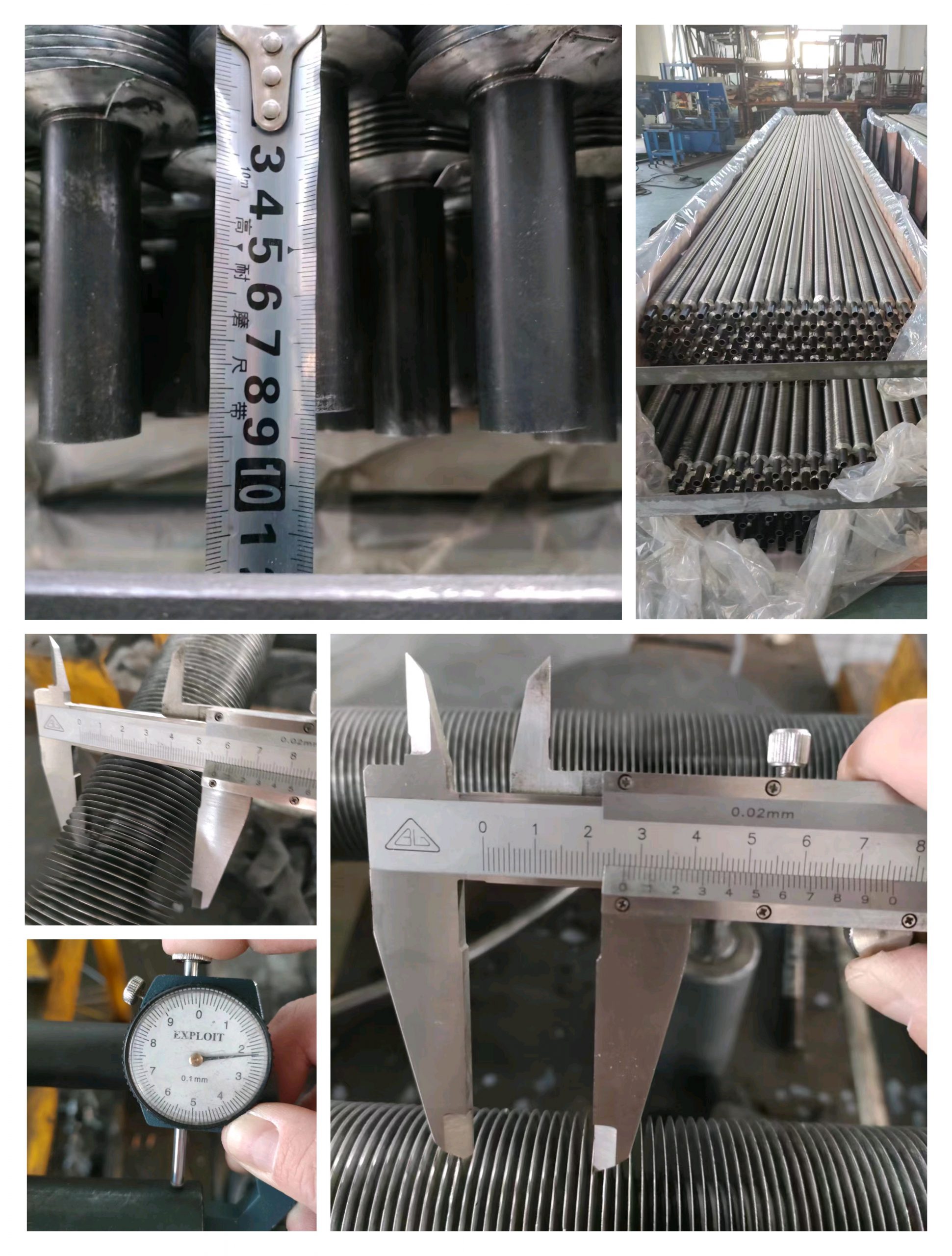
Customer factory inspection
